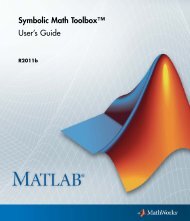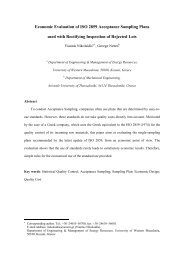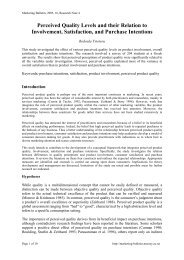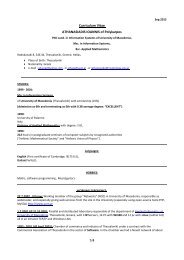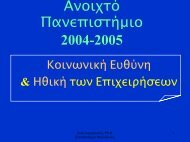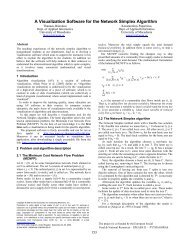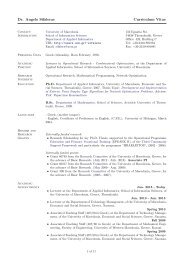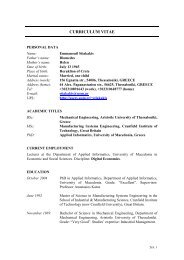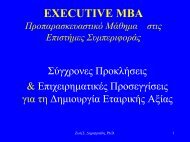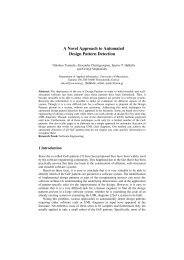Environmental regulation and international trade - Springer
Environmental regulation and international trade - Springer
Environmental regulation and international trade - Springer
Create successful ePaper yourself
Turn your PDF publications into a flip-book with our unique Google optimized e-Paper software.
66 EFTICHIOS SOPHOCLES SARTZETAKIS AND CHRISTOS CONSTANTATOS<br />
assumption of identical environmental st<strong>and</strong>ards between countries requires that the number<br />
of permits issued by the regulator in country S is equal to the maximum allowable units of<br />
emission in country N, i.e., ~v = ~.s. The regulator distributes the permits free of charge to<br />
the firms, with firm i receiving E~/= Es/2 permits. After the initial distribution of permits,<br />
firms can freely <strong>trade</strong> permits.<br />
With the introduction of <strong>trade</strong>able permits, another market is added to the model. This<br />
market can either be perfectly or imperfectly competitive. We assume here that the pollutant<br />
in question is emitted by many industries producing goods with zero cross-price elasticity<br />
of dem<strong>and</strong> <strong>and</strong> that the distribution of high <strong>and</strong> low abatement cost firms is similar across<br />
industries. Thus, while firms are Cournot players in the product market, they are price takers<br />
in the emission permits market. Firm i's net dem<strong>and</strong> for permits is NE~/= E//- ES/2, where<br />
E~/= E~/- A s is firm i's dem<strong>and</strong> for permits; in equilibrium, ]E2=1NE~i=O.<br />
Firm i's profit maximization problem is<br />
max n S = (a - bQS-SQN) qSi-s- cqi - a~ ss qi - ei (~SqS~ - P ~ (r - c~ S) qS _~__2_1<br />
s s<br />
i<br />
qi ,~i (5)<br />
where P~ is the price of permits. Setting ~/S/~o~S = 0 implies 10 pE = d + 2eio~Sq S, so that<br />
each firm sells or buys permits until its marginal cost of an extra permit is equal to its marginal<br />
cost of abatement. Firm i's output as a function of the permit price <strong>and</strong> North' s output is<br />
qS= a - c - rP e 8<br />
3b - 3-~ QN. (6)<br />
Aggregating output over i, we obtain total output in South as a function of North's output,<br />
Qs 2(a-c-rP E) 28<br />
= 3b - 3-6 QN. (7)<br />
From (A. 14), it is clear that el > e2 implies A s < A s. Therefore, the lower abatement cost<br />
firm engages in a relatively higher level of abatement <strong>and</strong> sells its excess permits to the high<br />
abatement cost firm. Since at the equilibrium the marginal abatement cost of both firms<br />
equals pC, the introduction of environmental <strong>regulation</strong> leaves relative market shares of the<br />
firms in country S unchanged, so that ~/QS=qS/QS.<br />
5. Trade Equilibrium with Regulation<br />
Solving simultaneously equations (4) <strong>and</strong> (7), we obtain QN, Qs as functions of the<br />
equilibrium values of L1, ~2, <strong>and</strong> pE,<br />
10 See Appendix 2 for details on the maximization of (5).



